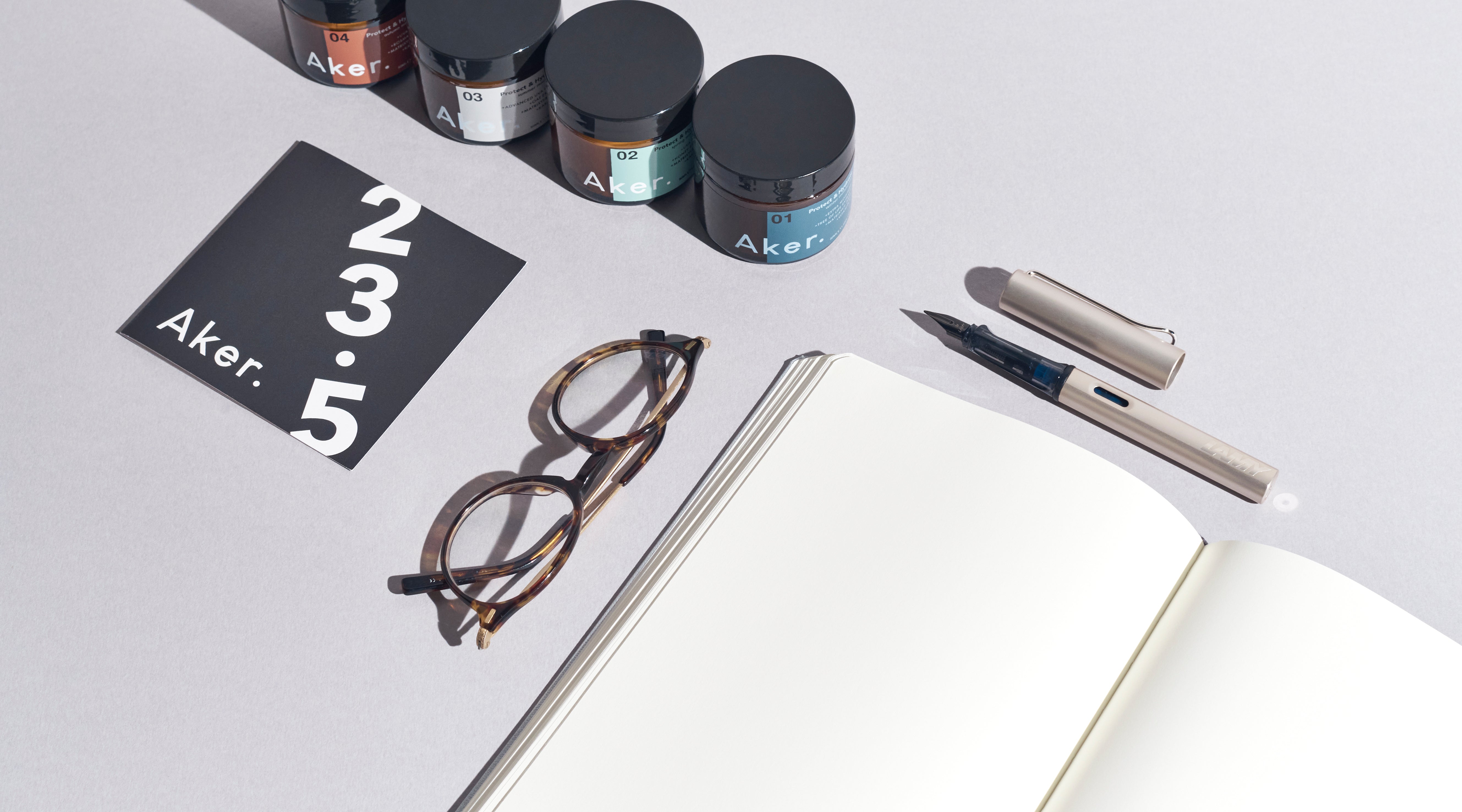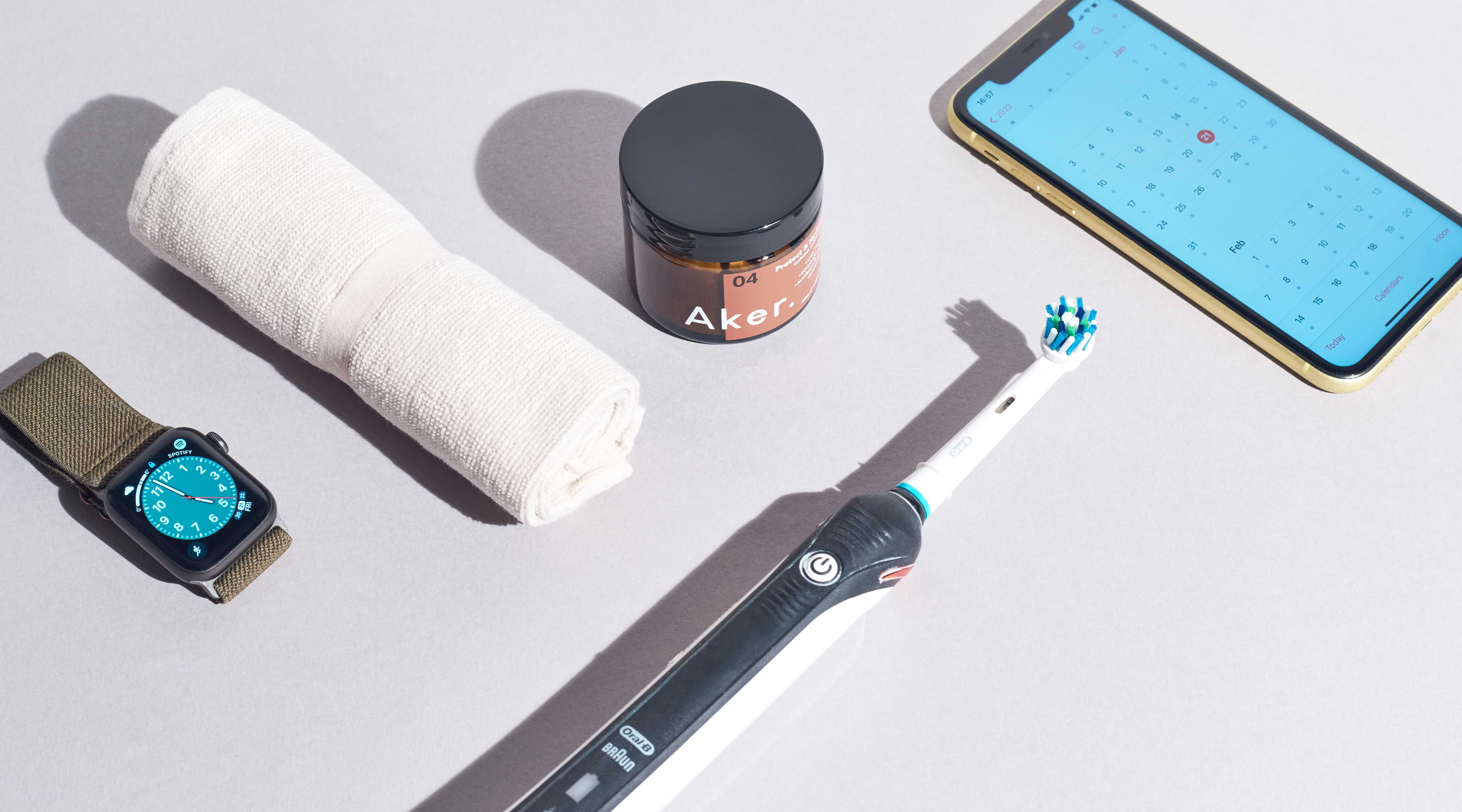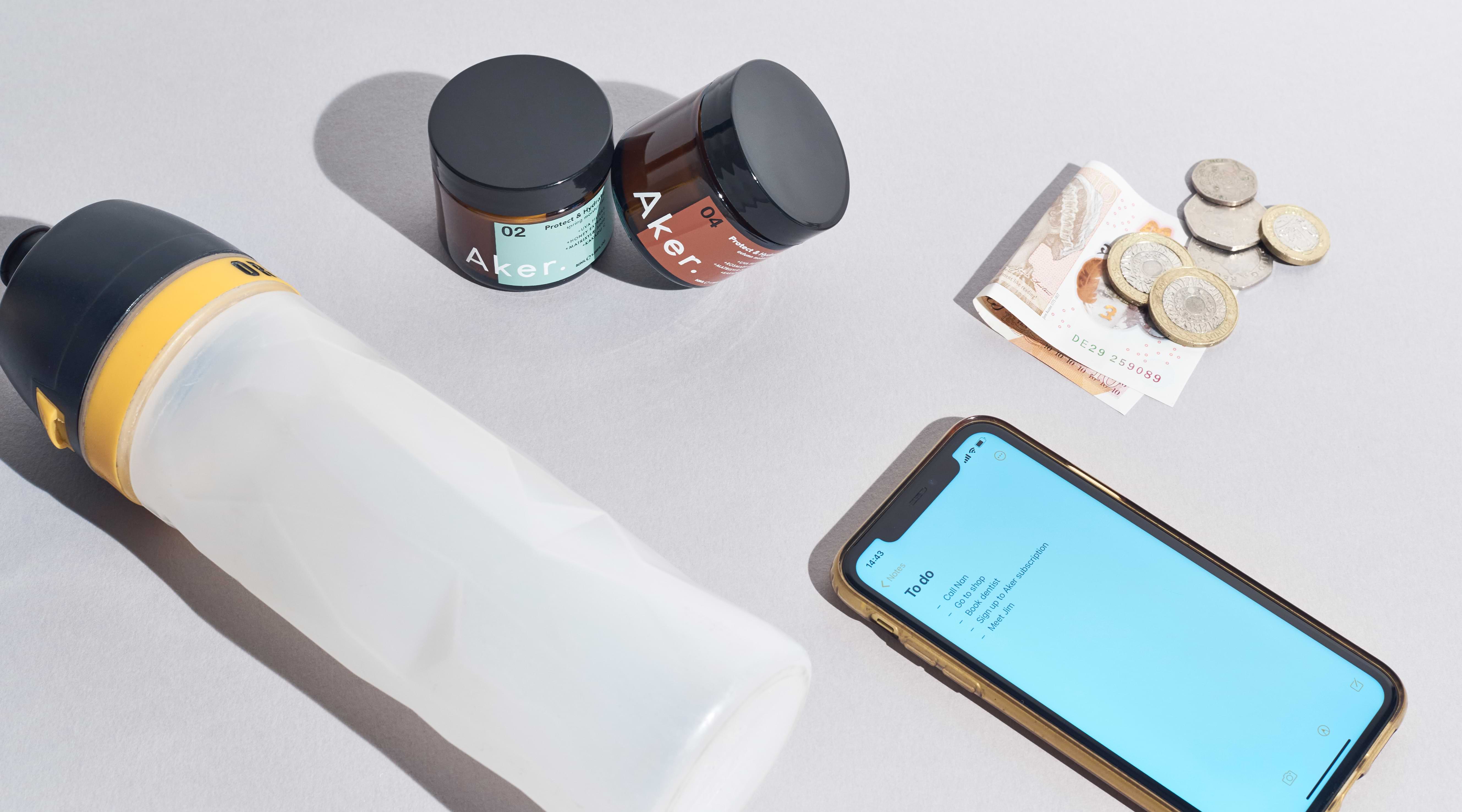Not to get all deep on you, but the Greek philosopher Heraclitus famously said that “the only constant in life is change”. He said a lot of other clever things, but his view on change is one that the centuries continue to prove accurate. Aker was born from a realisation that yes, change is inevitable, and that adapting to change is an important part of life.
One change completely out of our control is the natural change of seasons… but for some reason, very few skincare products factor this into their formulas. If oily summer skin can so easily flip to become dry winter skin or vice versa, doesn’t it make sense to create products that take this into account?
We wouldn’t expect you to blindly trust our seasonal skincare manifesto - how many times have companies twisted the truth before after all? - and so we’ve put together a comprehensive guide to understanding skin inside and out (quite literally). Transparency is key to us, and so we’ve collated all the reasons why skincare for men is:
- Necessary in general
- Necessary to be approached seasonally
- Impacted by both external and internal factors
Allow your eyes to be opened and your pores to be closed as you read on!
Men’s Skincare 101 (aka. ‘skinformation’)
Let's start with the basics of understanding your skin. You don’t need to worry about opening some dusty box in your mind labelled ‘high school biology’ in order to understand skin, but there’s just a couple of useful things to know when trying to understand why skincare is necessary.
The first mind-boggling skin fact is that skin is actually an organ. More than just that, skin is in fact the largest organ of the human body.
DID YOU KNOW?
We aren’t conscious of it but our skin is working all the time to facilitate our sensory abilities, regulate our temperature, absorb vital vitamins, and protect the more delicate parts of our anatomy from environmental harm and damage. Without our skin, we would be partially evaporated, jellied lumps.
In order to be effective, our skin isn’t the same all over - comparing our armpits to the soles of our feet easily shows this. There are areas where the skin is thicker, thinner, hairier, hairless, more sensitive, and less sensitive, depending on the environment that area of the body is most exposed to.
That’s why facial skincare is important. Throughout the year our faces are the least covered part of our body (except for hands, hands also have it rough), which means it is the number one part of the body that is exposed to the elements. The skin on your face goes through an awful lot and is almost never protected, unless you’re the rare type who rocks a skiing balaclava all year round.
Combine that prolonged environmental exposure with the fact that the muscles in your face (and therefore the skin that covers them) are constantly in use and moving, your facial skin is one of the thinner and more sensitive areas, and our faces have a lower number of skin cells than other areas of our body, it’s pretty easy to understand why our faces need some extra TLC.
In spite of these variations, all skin shows the same make-up under a microscope: 3 separate layers known as the epidermis, dermis, and subcutaneous fat layer. Among these layers’ can be found other structures such as nerves, follicles, sweat glands and cells, and these additional components will vary depending upon the individual’s genetic makeup.
Okay this does actually look like something out of a high school biology book... courtesy of Encyclopedia Britannica.
So, there are the basics of what you need to know about skin itself. It’s an organ, it’s big, it isn’t the same all over, and it's made up of layers. Simple, right?
From that biological baseline more external factors come into play.
The external factors that impact your skin
Good skincare goes a bit deeper than your dad’s trusty ‘soap, lather, and wash’ routine. In fact, the ‘soap, lather, wash, and you’re done’ mentality completely ignores a key element in attaining the healthiest look and feel to your skin - lifestyle.
How lifestyle affects skin health
These are the things outside of ourselves that we still have a degree of control over. These are things such as
- The products you use on your skin
- If you’re on any medication
- Your diet, covering both your nutritional and liquid intake
- Whether or not you smoke
- How often you wash
- Levels of exercise you do
- Your stress levels
- How much sleep you’re getting
All of these factors play a role in the overall health of your skin. Even the most dedicated skincare routine will fall short if these lifestyle factors are at an excessive imbalance.
Environmental consideration for skin
The other side of external factors is ‘environmental considerations’. These are things like air quality, sun exposure, temperature, humidity, wind, rain, snow, and hail, aka. what the world throws at us, and we have little to no control over.
When looking at these factors the only way to really ‘avoid’ them is by constantly moving to a new country in an attempt to chase one perpetual season, or by living in a very high-tech, atmosphere controlled house that you never leave. If neither of those are very practical for you, the only other option is to put protective measures in place.
How the change in season affects your skin
We have the term seasons to distinguish between the different climate conditions that occur as the earth does its yearly orbit around the sun.
DID YOU KNOW
The northern hemisphere has greater differences between its seasons because of the orbital path.
Our skin faces exposure to different temperatures, humidity, UV intensity, and air currents within each of the 4 seasons. Science has proven that our skin actually changes in response to these fluctuations, with a landmark 2018 study from the British Journal of Dermatology concluding clearly that “the skin barrier is affected by climatic and seasonal changes”.
When considering a seasonal approach to skincare it seems appropriate to first identify the main meteorological phenomena that challenge our skin. The main things to ask yourself when planning out your skincare routine are the changes in the following factors:
- Temperature
- Sunlight / UV rays
- Wind
- Humidity
- Your interactions with the external environment
Don’t worry if you don’t have the time to scour research papers or go deep into meteorological archives to find these answers - we’ve already done the leg work. Here is a clear breakdown of how each season affects your skin.
How to look after skin in spring
Main concerns:
- Increasing sun exposure
- Adaptation to new levels of humidity and temperature
- Climatic differences on a day to day basis
Spring is an unstable and transitional season. You’re never quite sure what you’re going to get - some years it feels as if winter is eternal, whereas in others it’s camping weekends and beach barbeques by March 1st?! The biggest threat to our skin at this time is, therefore, the need to rapidly adapt as conditions change, and unfortunately, skin is a fan of consistency.
Sebum production increases in the transition from winter to spring, and so lighter products are needed to prevent overloading and clogging up our skin- oiliness and breakouts are always a risk in this interim period.
We also need to protect our skin as it adapts to increased sunlight, and therefore increased UV exposure. Because it can still be nippy outside people tend to forget that the sun’s rays are still potent, and therefore skimp on the sun protection. The sun has an understated ferocity in spring, so keep your fragile skin safe as it goes through the seasonal transition period.
Focus on:
- Exfoliating and cleansing away dull winter skin
- Protection from increased UV exposure
- Balancing your skin’s hydration as sebum levels adapt
- Ingredients and routines that help keep your complexion clear
How to look after skin in summer
Main concerns:
- Sun exposure
- High temperature
- High humidity
The time of year where we allow ourselves to blissfully rest and indulge in all the glory of the great outdoors. Most of us will spend significantly more time outdoors during the summer months, basking in the sun's rays for hours on end.
You’ve probably heard of the negative effects UV rays can have your skin before and it’s completely true that protection from them is crucial. UVA and UVB rays play different roles, but both contribute to skin ageing and cell damage. SPF offers protection from their harm and should play a key role in your summer skincare. And, if your skin does become damaged from the harmful rays of the sun, you will want to treat your skin kindly as it repairs.
The other big thing to consider in summer is sweat. Our sebum production has already increased, and when you combine that with sweat your skin can be looking at an oil overkill that will clog your pores if you are using products that are too heavy. Equally, irritation by the salt sweat left on your skin and the dry heat can cause skin to become irritable and uncomfortable.Your skincare has to balance these concerns with the sun’s dehydrating effects in order to fully protect and nourish your skin during summer.
Focus on:
- Protection from high UV exposure
- Using products that help manage the risks of high sebum production
- Staying hydrated
- Calming skin irritation and helping cell repair
How to look after skin in autumn
Main concerns:
- Adaptation to new levels of humidity and temperature
- Climatic differences day to day
- Moisture wicking winds
As another transitional season, autumn poses similar issues as spring. Our skin doesn’t get the chance to recover from the summer assault of pigmentation, dehydration, and inflammation. We’re very sensitive to external stressors, and so it’s not uncommon to face breakouts, redness, or dryness during these months.
One of the key weather changes in this time is the decreasing humidity. At the same time your sebum production decreases, and the central heating is starting to power up. Our behaviours during these cooler months- central heating, hot showers, warming drinks- all have the unfortunate result of stripping our skin of even more moisture than the elements alone, and so hydration is the biggest focus during autumn.
Focus on:
- Balancing your skin’s hydration as sebum levels adapt
- Exfoliating to clear dead, dry skin, and to stimulate cell growth
- Protecting your skin from the incoming cold
- Protecting your skin from the remaining high UV rays of summer
How to look after skin in winter
Main concerns:
- Low humidity
- Icy temperatures
- Cold wind
- Extreme changes in temperature from outdoors to indoors
Winter is probably the harshest period on skin. Many people suffer from dry winter skin and the resulting irritation it brings. The combination of low humidity, cold air, buffeting winds, and extreme changes from outdoors to indoors strips our skin of its natural moisture, leaving our skin dried out and sensitive - the lack of moisture actually limits enzyme functions that the skin needs to maintain a healthy barrier.
We also get less of essential nutrients like vitamin D, which exacerbates the dull and dry appearance of our skin. Sometimes our skin will overcompensate for the extreme dryness and produce an excess of natural oils. The best method to look after your skin during this time is to keep it seriously moisturised and to be gentle with your skin (especially with extreme temperature changes).
Focus on:
- Hydration, hydration, and some more hydration!
- Using sensitive products that do not exacerbate sore skin
- Ensuring your diet is vitamin rich and supports overall health (linked to skin health!)
- Alleviating and protecting damaged skin and problem areas
The internal factors that affect skin
Now we have covered the external factors that affect your skin, lets round off and look at the internal influences that also affecting your skin and how that ties into the seasonal change.
Is good skin genetic?
Our genetic makeup plays a huge role in our skin profile, its aging process, and problems we may experience over our lifetime. Our genetics determine our skin type, of which there are 5 basic classifications.
- Normal
- Dry
- Oily
- Combination
- Sensitive
Different skin types will be affected by the seasons in less/more extreme ways. For examples dry skin is more likely to face problems during the winter months as is oily skin in summer. You can find out more about the differences in skin types and how they are affected by the seasons in our blog post here.
Genetics also determine the biological aging process of our entire body, skin included. As we age our cells’ abilities to regenerate and renew themselves lessens. Connective tissue and elastic fibres degenerate, which leaves your skin less supple, and our layers of skin become thinner after a certain point in our lifetime.
How hormones affect your skin
Hormones also have a significant impact upon skin; the stress hormones adrenaline and cortisol, the mood hormone serotonin, and the thyroid hormones triiodothyronine and thyroxine can all affect your skin. Sebaceous glands have receptors designed to monitor hormonal fluctuations, and increase or decrease sebum production accordingly.
DID YOU KNOW
Sebum, the product of our sebaceous glands, is a substance that coats, moisturises, and protects the skin. It is what we refer to as a ‘natural oil’ of our bodies.
Especially for men, the hormone testosterone is a key player in your skin’s condition. As the main male sex hormone testosterone is responsible for a lot of processes and cycles in the male body, especially stimulation of hair growth and sebum production.
High sebum production as seen in skin during the transitional and warmer months (commonly on the face, back, chest, and shoulders) can lead to an excess of sebum. When this happens, the sebum will become ‘trapped’ in hair follicles and may lead to acne, inflammation, and general skin sensitivity.
The difference between male and female skin
There are some key physiological differences between male and female skin. Some of these differences are minor, but some are extremely pronounced (such as men having as much as 20% thicker skin). The key differences to note when it comes to male skincare are:
Sebum production
Men produce two times more sebum than women. Having both larger sebaceous glands and pores, male skin is more prone to oiliness, impurities, and acne as a result.
Skin thickness
As noted above, men have thicker skin than women. They also have tougher skin than women because they have higher collagen levels.
Aging
Men and women age differently. Male collagen levels decrease at a consistent rate throughout their lifetime, whereas women only experience this in later life.
Although visible aging comes later for men, they have a greater tendency for forehead wrinkles and facial sagging. Once these changes have become visible they tend to be much more pronounced, and quicker to progress.
Hair
Men are hairier than women, and have a lot more facial hair. When we shave as a method to manage our body hair we put ourselves at risk of cutting, scarring, dryness, irritation, ingrown hairs, and redness or rashes, all of which put strain on our skin.
These differences further highlight the need for specific male skincare products; an anti-aging cream for men should focus on preventing loss of elasticity; men’s moisturiser needs to account for higher sebum levels; all face creams for men must take into account that thicker layers of skin will be penetrated.
Do you see where we’re going with this? Skincare should be tailored to physiological differences.
How to keep your skin healthy all year
Our skin loves consistency. To keep our skin healthy all year round the focus needs to be on balancing out the changes of the world around us in order to minimise the barrage of environmental fluctuations that disrupt our skin. Equally, ensuring that internal factors are kept in balance throughout the year will mean your skin will look its absolute best.
We hope you’ll now agree with us that a seasonal approach to skin health is the best thing since sliced bread, but switching up your products doesn’t mean you have to change your entire skincare routine.
Your facial routine doesn’t have to take long, but it does take commitment. The best men’s face care routine means dedicating a couple of minutes at the beginning and end of the day. You can read our in depth article on the best (and simple!) AM/PM skincare routine for men here.
We hope this article has shared a little of our passion for seasonal skincare with you, and that you’re now on your way to following the rhythm of nature just like us. We wholeheartedly believe that your skin deserves to be treated well every season, as a little thank you for the work it puts in everyday to protect and support you. If you’d like to learn more about our approach to skincare, or any other aspect of Aker, then feel free to contact us via contact@akerskincare.com.







Comment
This is such a great article – the perfect amount of humour!